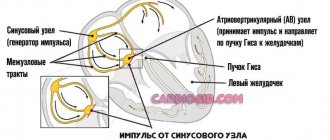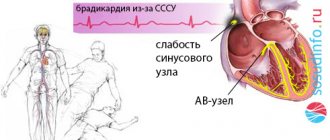Menopausal syndrome
in women it is a whole complex of symptoms that arise during menopause against the background of declining reproductive function.
- Menopausal syndrome
- Symptoms
- Our services
- Our doctors
- Price-list
- Analyzes
- Make an appointment
These symptoms complicate the normal (physiological) course of the menopause due to the following reasons:
- too sharp a decrease in estrogen production,
- mismatch in the functioning of the endocrine system,
- the presence of concomitant diseases and conditions that affect the course of menopause (gynecological diseases and past abortions, autonomic disorders, endocrine pathology, cardiovascular diseases, psychological discomfort, traumatic brain injuries, etc.).
After menopause, climacteric syndrome is observed 1.5-2 times more often than in premenopause. Its typical symptoms are especially common in the first 2-3 years of postmenopause.
Menopausal syndrome, symptoms
During menopause, a woman may experience a number of unpleasant sensations. Symptoms can vary in intensity and be present in different combinations. They are divided into several groups.
Neurovegetative symptoms:
- tides;
- sweating;
- changes in blood pressure;
- chilling;
- nausea, abdominal pain;
- dizziness, headaches;
- heartache;
- palpitations.
Metabolic-endocrine symptoms:
- swelling, weight gain;
- engorgement of the mammary glands, mastopathy;
- flatulence;
- vaginal dryness, spotting, bleeding;
- skin atrophy, itching;
- urinary incontinence, painful urination;
- pain in bones and joints;
- increased blood cholesterol levels.
Psycho-emotional symptoms:
- irritability;
- decreased libido;
- sudden mood changes;
- tearfulness;
- aggressiveness;
- anxiety;
- depression, apathy;
- forgetfulness, deterioration of concentration;
- insomnia;
- inexplicable sensations (tingling, goosebumps, etc.).
Treatment of tachycardia
Rapid heartbeat leads to disruption of the heart, internal organs are insufficiently supplied with blood, diastolic pressure decreases, this contributes to the development of coronary disease and heart attack.
During an attack, the heart rate increases to 150–200 beats per minute. This state lasts from several minutes to several days. In women suffering from concomitant diseases of the circulatory system, the risk of developing heart failure increases and body edema increases.
Treatment of tachycardia during menopause is carried out by eliminating the main cause of the pathology. Normalization of hormonal levels is required, for this purpose hormone replacement therapy with estrogen analogues is prescribed. The drugs replenish the deficiency of endogenous sex hormones, reduce the frequency of hot flashes, normalize mood, the functioning of the central nervous system, circulatory system and heart.
The means for HRT are selected by a gynecologist or endocrinologist individually for each woman. The patient’s age, the severity of menopause symptoms, and the presence of concomitant diseases are taken into account. Medicines are prescribed in the form of tablets, vaginal suppositories, transdermal patches or gels.
You can treat tachycardia and other symptoms of menopause by taking phytoestrogens. These are preparations with estrogenic properties, made on the basis of plant components. Taking such pills has fewer contraindications and side effects than hormone replacement therapy. Phytoestrogens include:
- Remens;
- Qi-klim;
- Climaxin.
If the cause of palpitations is hyperthyroidism, it is necessary to undergo treatment by an endocrinologist. Normalizing the functioning of the thyroid gland will help get rid of attacks of tachycardia and ease the menopause.
Treatment of arrhythmia during menopause is carried out with the drugs Verapamil, Adenosine. Medicines cannot be taken without a doctor’s prescription; the doctor selects the pills taking into account the cause and form of the pathology.
Hot flashes during menopause
The most constant and early symptom is hot flashes during menopause - periodically occurring redness of the skin and a feeling of heat in the face, neck, and chest. Hot flashes are often accompanied by sweating, headache, palpitations and insomnia. Based on the number of hot flashes per day, the following forms of menopausal syndrome are distinguished:
- mild - up to 10 hot flashes per day,
- average - 10-20 hot flashes with characteristic symptoms,
- severe - over 20 hot flashes and other pronounced manifestations.
It should be noted that the variety of symptoms of menopausal syndrome is often due to a psychosomatic component, in particular, the anxious attitude of the woman herself to the changes occurring in her body. Therefore, with competent help from a psychotherapist or psychoneurologist, many manifestations of menopause can be mitigated even without medications.
How to reduce symptoms and signs of menopause in women: useful tips
With the onset of menopause, it is recommended to adhere to the following recommendations:
- Move more, engage in feasible sports and physical exercise.
- Master breathing and relaxation techniques
- Eat right and stay hydrated.
- Exercise your brain (read, solve crosswords, learn foreign languages).
- Perform exercises that train fine motor skills.
Remember: a correct lifestyle and timely consultation with a doctor if necessary will allow you to reduce unpleasant symptoms during menopause!
Sources:
- SOFT CLIMAX. Zhexembinova R. S. // Bulletin of surgery of Kazakhstan. – 2011. – No. 4. – P.98.
- MODEL OF SPECIALIZED CARE FOR WOMEN WITH Climacteric Disorders. Kholodova L.N., Protopopova N.V., Kravchuk L.A., Sharifulin M.A. // Siberian Medical Journal (Irkutsk). – 2004. – P. 76-77.
- Guide to outpatient care in obstetrics and gynecology / ed. V. E. Radzinsky. — 2nd ed., revised. and additional - M.: GEOTAR-Media, 2014. - 944 p.
- Gynecology: textbook. for universities / ed. G.M. Savelyeva, V.G. Breusenko. — 4th ed., revised. and additional - M.: GEOTAR-Media, 2012. - 432 p. : ill.
- https://www.medicinenet.com/menopause/article.htm
- Menopausal syndrome. EAT. Vikhlyaeva // Guide to endocrine gynecology. - M.: MIA. - 1998. - P. 603-650.
- Therapy of depressive disorders in general medical practice. Dubnitskaya, E.B. A.V. Andryushchenko // Modern psychiatry. – 1998. – No. 2. – pp. 10-14.
- Menopause and perimenopausal period. R.B. Jaffe // Reproductive endocrinology. Edited by S.S.K. Yen, R.B. Jaffe. – M.: Medicine. - 1998. - T.2. – pp. 560-586.
- https://www.menopause.org/for-women/menopauseflashes/menopause-symptoms-and-treatments/are-we-there-…
- https://www.healthline.com/health/menopause/symptoms-signs
- https://nccih.nih.gov/health/menopause/menopausesymptoms
Discharge during menopause
During premenopause, menstruation gradually loses its former regularity: it may occur later or earlier than expected. Their intensity changes - and it can either decrease or increase. Occasional intermenstrual discharge is possible - light, “spotting”, brownish in color.
So-called menopausal bleeding, associated with impaired production of sex hormones, develops in women aged 40-50 years, before menopause. Typically, such bleeding begins after a missed period, but it may coincide with the expected period or even begin a little earlier. It differs from regular menstruation in its long duration - up to several weeks.
The intensity of such bleeding may vary and may be repeated. Sometimes they are quite abundant, even threatening health and life.
Menopausal bleeding requires treatment in a hospital, usually responds to hormone therapy, but surgery may also be required. As a rule, diagnostic curettage is required to clarify the diagnosis in such cases. This is necessary in order not to miss possible hyperplasia (overgrowth) of the endometrium, its polyps and other conditions that are also manifested by uterine bleeding. Treatment tactics will depend on the correct diagnosis.
Uterine bleeding that occurs in postmenopause is much more dangerous, as it often indicates a serious illness. For example, spotting in a woman not receiving hormone replacement therapy that occurs several years after menopause can be caused by uterine cancer or ovarian tumors. In this case, it is necessary to undergo a thorough medical examination as quickly as possible with mandatory separate diagnostic curettage of the mucous membrane of the cervix and body of the uterus. Early diagnosis allows for timely successful treatment.
What heart rate is considered normal?
The human heart contracts at a certain frequency, so the blood moves through the vessels in spurts or, as doctors say, pulsates. The pulse refers to the vibrations of the walls of blood vessels that correspond to the contractions of the heart.
In order to measure the pulse, you need to place two fingers on the carotid artery and count the heartbeats in one minute. The second option is to press the radial artery to the wrist bone of the left hand in the wrist area with two fingers of the right hand. You should know that your heart rate will change as you age.
Let's consider what heart rate is considered normal in women by age during menopause:
- 30-50 years old normal levels are 70-80 beats per minute;
- 50-70 years – 75-85 beats per minute;
- over 70 years old - no more than 90 beats per minute.
Thus, with age, the heart rate increases. On average, for every twenty years by 5-10 beats per minute.
When a woman is in a calm state, and her pulse is rapid and exceeds 90 beats per minute, tachycardia is diagnosed. If the normal rhythm of the heart is disrupted, this condition is called arrhythmia. Sudden onset of rapid heartbeat during menopause is quite common and does not always pose a threat to a woman’s health.
Average figures for adults of both sexes.
Changes in the mammary glands during menopause
The hormonal changes that occur in a woman’s body during menopause, of course, also affect the condition of the mammary glands. Many women experience painful tension (“engorgement”), especially in the area around the nipples. Sometimes in the thickness of the glands, palpable small painful nodules either disappear or reappear.
This is not necessarily breast cancer, and yet with such manifestations it is necessary to see a doctor. Only a thorough examination, including mammography and other examination methods, will help determine whether these formations are tumorous.
Why is extrasystole dangerous during menopause and how to treat it?
Extrasystole is a sudden contraction of the heart muscle. A person feels several shocks (beats) in the chest area, which are a consequence of contraction of the ventricles. It is worth noting that this disease does not always manifest itself during menopause. The main risk group is women with bad habits (coffee, alcohol, cigarettes).
But no less dangerous factors are overwork, lack of sleep, increased physical activity, and systematic stress. If you do not start to fight the disease, it can cause various pathologies in the functioning of the heart.
Treatment of extrasystole is possible only under strict medical supervision, because only a specialist can determine the form of the disease and its location.
Urinary incontinence during menopause
Urinary incontinence is a fairly common manifestation of menopausal syndrome. The fact is that the work of the bladder, urethra and the tone of the pelvic floor muscles depend on the level of estrogen in the body. And their deficiency can lead to weakening of the muscles responsible for urinary control. The following violations may occur:
- stress urinary incontinence - involuntary leakage of a small amount of urine during sudden movements, jumping, lifting heavy objects, coughing, sneezing, laughing;
- Urgent (induced) urinary incontinence, in which the muscles of the bladder contract untimely, which causes the involuntary release of a large amount of urine (an irresistible urge is felt, the woman simply does not have time to run to the toilet);
- pain, burning when urinating;
- frequent urination, the need to urinate even several times a night.
We must also not forget that the cause of urinary dysfunction in women in adulthood can be not only menopause itself, but also urinary tract infections. Age-related weakening of the sphincters contributes to their occurrence. The condition of the urinary tract can also be affected by concomitant diseases, such as diabetes mellitus, cerebrovascular accidents and many other factors.
Urinary problems should not be accepted as an inevitable part of aging. You should not hesitate to discuss this problem with a gynecologist and urologist, and also undergo a detailed examination of the pelvic region and urinary system. Specialists will help you find out the true causes of problems and suggest ways to solve them.
Typically, for urinary incontinence, the following are recommended:
- strengthening the pelvic muscles using Kegel exercises, which are based on prolonged contraction and subsequent relaxation of the pelvic floor muscles;
- “training” of the urinary tract using special simulators;
- limiting caffeine consumption;
- fight against excess weight;
- biofeedback method, electrical stimulation of the pelvic muscles;
- drug therapy, local use of hormones;
- surgical intervention.
What are the causes of changes in heart function during menopause?
The symptomatic manifestation of menopause and changes in heart function during menopause have a double impact on the overall functioning of the body. Any disruption of the heart rhythm causes a deterioration in a person’s well-being. And if we add here a decrease in hormonal activity, it turns out that the organ does not have time to rest and distribute oxygen, as well as other important components.
As a result, arrhythmia and menopause combine the following changes:
- A decrease in the concentration of sex hormones causes an increase in cholesterol. Changes occur in the composition and physical characteristics of the blood, which becomes more viscous, and increased stress on the work of the heart occurs.
- The lining of blood vessels becomes less elastic, and the occurrence of deposits further complicates the work of the heart. Therefore, the difficult outflow of blood increases pressure on the vessels.
- Changes in the emotional background play an important role. Menopause makes a woman more irritable, anxious and even fearful. Sleep is disturbed, and sudden changes in mood and the emergence of negative emotions affect the rhythm of the heart.
- Overweight. It is known that the female body resists the depressed state of the ovaries, therefore it tries to compensate for the lack of estrogen with lipid cells. As a result, excess fat increases the load on the heart muscle, thereby preventing the blood vessels from working effectively.
It turns out that in this period of a woman’s life, the heart rhythm practically cannot remain the same (normal) if you do not provide help to your body. In order to properly respond to the disease and support the heart during menopause, you need to know the types of arrhythmia that occur during menopause.
What will help you relax and calm down?
During attacks, it is very important to calm down and not panic so that the pressure does not rise. Breathing exercises help a lot with this.
Normal blood pressure and pulse.
To alleviate the condition, you should do the following exercises:
- Inhale slowly through your nose and exhale through your mouth. At the same time, breathe not with your chest, but with your stomach: as you inhale, your stomach inflates like a balloon, and as you exhale, try to press the abdominal cavity as close as possible to the spine. The exhalation should be exactly twice as long as the inhalation.
- Inhale slowly and hold your breath. Try to push the air you inhaled toward your diaphragm by inflating your belly.
Remember that holding your breath for a long time is not recommended. After all, holding your breath for a long time leads to an increase in blood pressure.







